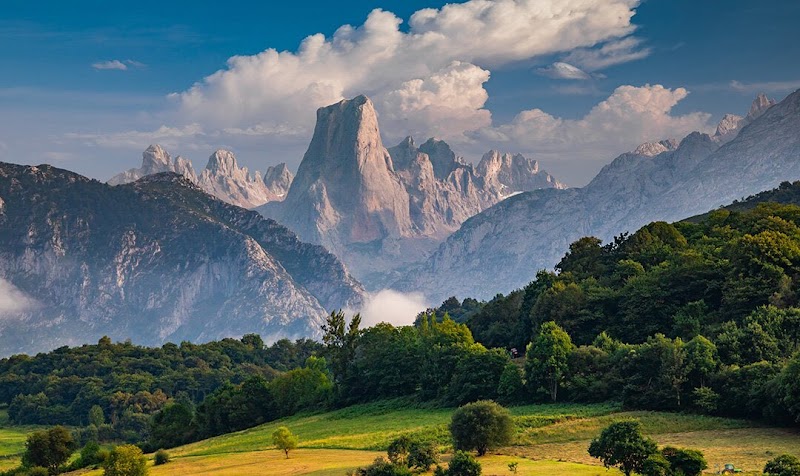Exploring The Other Near Ramales de la Victoria: Adventure Beyond The Beaten Path
Discover the Other near Ramales de la Victoria, where quiet trails, rugged rivers, and limestone cliffs invite adventurers into Cantabria’s raw natural beauty. This guide balances practical trail details with immersive insights to help you plan your next outdoor escape.
Wear Durable Footwear
Sturdy hiking boots with good grip are essential to navigate rocky trails and uneven terrain safely.
Bring Adequate Water
Hydration packs or bottles with at least 2 liters recommended; natural springs are scarce on many routes.
Start Early
Begin hikes in the morning to avoid afternoon heat and maximize daylight, especially during summer months.
Check Weather Conditions
Weather can shift quickly; bring layers and a waterproof jacket to stay comfortable and dry.
Exploring The Other Near Ramales de la Victoria: Adventure Beyond The Beaten Path
Other Near Ramales de la Victoria: Your Gateway to Authentic Cantabrian Adventure
Ramales de la Victoria stands as a vibrant hub for outdoor enthusiasts, but the 'Other'—the lesser-known trails, rivers, and natural enclaves nearby—quickly prove to be the crown jewels of this region. These hidden corridors invite you beyond the familiar, where forested slopes challenge your steps and river currents urge you forward. The Other near Ramales de la Victoria offers hiking, climbing, and river sports set within Cantabria’s rugged landscapes, balancing thrilling exploration with accessible routes.
Why Explore the Other Near Ramales de la Victoria?
The keyword focus here centers on "Other near Ramales de la Victoria," "outdoor activities Ramales de la Victoria," "hiking trails near Ramales," and "adventure trips Cantabria." These areas showcase less trafficked natural destinations, ideal for visitors seeking authentic experiences. The steep limestone cliffs of the Peñas de Aia range dare climbers to test their limits. Meanwhile, quiet forest paths weave through oak and chestnut groves, rich with wildlife encounters and seasonal blooms.
Tours and excursions branded around these keywords attract travelers hungry for day trips and multi-day adventures. Practical details like distance, elevation, and terrain give clarity: expect uneven rocky paths, occasional steep ascents, and rivers that range from gentle crossings to lively rapids. Essential gear includes sturdy boots and hydration solutions to match the unpredictability of the terrain.
Adventure here means respecting the fierce character of the landscape. The Other near Ramales de la Victoria pulls you into an active dialogue with nature—a river that pushes, a hill that demands, a forest alive with sounds and smells. Planning carefully, you’ll find your footing and stride with confidence, making the journey as rewarding as the destination.
Nearby Trips & Excursions To Book
- Guided hikes through the Peñas Negras and surrounding limestone formations.
- Kayaking trips on the Asón river, with safety equipment and expert guides.
- Mountain biking routes designed for both beginners and experienced riders.
- Birdwatching walks focused on Cantabria’s rich avian diversity.
Each experience offers an opportunity to engage directly with the wild heart of Ramales de la Victoria, supporting local operators who live and breathe the land.
Nearby Trips
All Adventures
Boat Charters
Water Activities
Adventures near Ramales de la Victoria
Discover the unique and memorable adventures that make Ramales de la Victoria special.
Frequently Asked Questions
What are some lesser-known viewpoints near Ramales de la Victoria?
The Mirador de La Areta, reachable via a short hike east of Ramales, offers expansive views over the Asón valley away from usual crowds. Another hidden gem is the Peña Carazo ledge, accessible through steep forest trails, perfect for sunrise photography.
Which local wildlife might I encounter on these trails?
Visitors often spot Cantabrian chamois navigating cliffs, roe deer at dawn in the forests, and the bold Eurasian jay darting between oaks. Birdwatchers should watch for the striking black woodpecker and migratory raptors during seasonal shifts.
Is the area around Ramales de la Victoria historically significant?
Yes, the region was a strategic location during medieval times, with remnants of watchtowers and Roman-era roads still traceable. The town itself grew around the ironworks industry, which shaped both local culture and landscape.
What environmental considerations should visitors keep in mind?
Trails pass through sensitive habitats, so sticking to marked paths minimizes erosion and disturbance. Avoiding litter, limiting noise, and respecting wildlife breeding seasons support conservation efforts vital to the area's health.
Are there any dangerous or challenging spots on these hikes?
Some sections along limestone cliffs require secure footing and caution, particularly after rain. River crossings may be brisk or slippery, so crossing only at marked points and using trekking poles is advised.
When is the best time of day to photograph this landscape?
Early morning light casts warm tones on valleys and cliffs with fewer shadows, while golden hour before sunset enhances the forest’s colors. Midday light can be harsh, so seek shaded vantage points or focus on close-up flora and fauna.
Recommended Gear
Hiking Boots
Provides ankle support and protects feet on rocky and uneven paths.
Hydration Pack or Water Bottles
Maintains hydration during hikes, crucial given limited water access on trails.
Layered Clothing
Adjusts to changing weather, protecting against rain, wind, and cold.
Sun Protection (Hat, Sunscreen, Sunglasses)
Shields from intense sun and UV rays during warm months.
Local Insights
Hidden Gems
- "Mirador de La Areta"
- "Peña Carazo ledge"
- "Quiet oak forests east of Ramales"
Wildlife
- "Cantabrian chamois"
- "Roe deer"
- "Eurasian jay"
- "Black woodpecker"
History
"Ramales de la Victoria holds medieval military significance, with visible ruins of old watchtowers and ancient Roman roads. The ironworks legacy influenced both settlement patterns and local culture."
